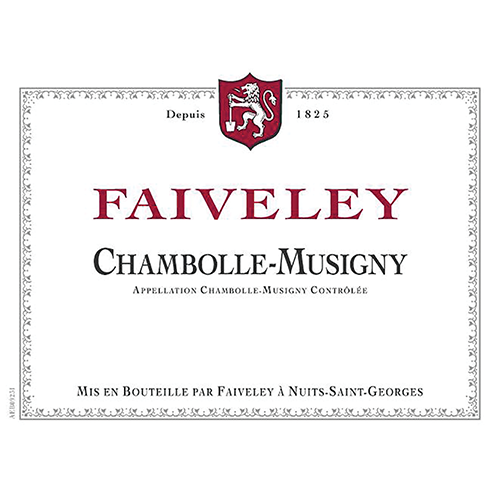
Domaine Faiveley
Faiveley, Chambolle-Musigny
The village of Chambolle came into existence in the 12th century, when laymen were working just nearby at Clos Vougeot for the monks of Cîteaux. Like many Côte de Nuits villages at the end of the 19th Century, Chambolle chose to add the name of its best Cru to the village name, becoming Chambolle-Musigny in 1878.
The village of Chambolle came into existence in the 12th century, when laymen were working just nearby at Clos Vougeot for the monks of Cîteaux. Like many Côte de Nuits villages at the end of the 19th Century, Chambolle chose to add the name of its best Cru to the village name, becoming Chambolle-Musigny in 1878. Viticulture: Organic Farming
Soil: Stony, rich in limestone
Exposure: East, South-East
- Region
- Bourgogne
- Appellation
- Côte de Nuits
- Sub-Appellation
- Chambolle-Musigny AOP
- Varietal Composition
- Pinot Noir
- Aging
- 14 months in French oak barrels, 20-30% new oak, with an additional 2 months in stainless steel vats.
- Alcohol
- 13%
A beautiful, brilliant garnet-red color. The nose is very pretty with woody and fruity notes. The whole is very pleasant. On the palate, we find grilled and fruity, very ripe cherry aromas. The tannins are present without being too intrusive or aggressive. An elegant wine, fine and distinguished.
Wine Advocate
97 Points
2022
“As usual, the 2022 Musigny Grand Cru is a micro-cuvée from a tiny 0.03-hectare parcel. Wafting from the glass with aromas of black cherries, wild berries, incense, licorice and exotic spices, it's full-bodied, seamless and perfumed, with a deep and multidimensional core of fruit, supple tannins and a long, resonant, intensely saline finish.”
— William Kelley, 2024




